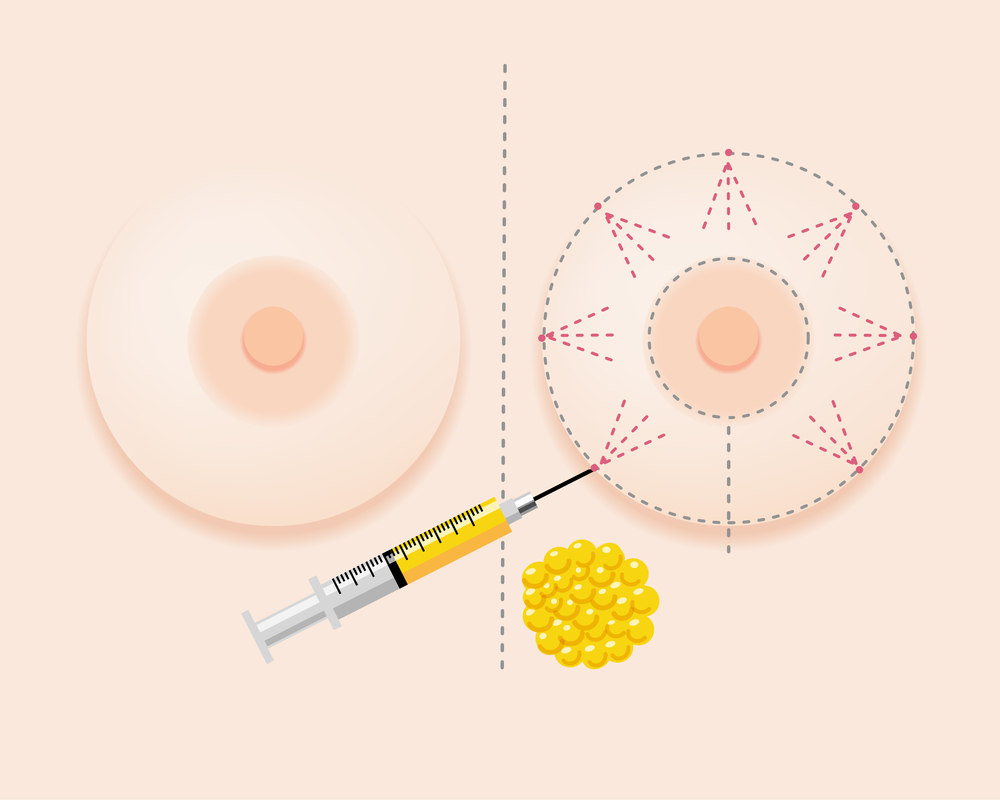
Fat transfer for the breasts is a promising option for restoring volume and shape. Fat is extracted from one area of the body, often the abdominal area or hips. The fat is then added to the breasts to increase their natural size and add contour. Transferred fat implants into the breasts, permanently integrating into the tissues.
From breast reconstruction after cancer to breast implant removal, fat grafting is the ideal method for enhancing your natural breasts’ shape or size.
The Science Behind Fat Grafting For Breast Reconstruction
Doctors and providers have been successfully using patients’ fat in the surgical restoration of a natural, healthy appearance for more than 100 years. Fat grafting can transform and reconstruct areas damaged by cancer and cancer treatments and restoring a more youthful look for issues brought on by aging.
The success rate of fat transfer surgery relies on the harvesting, processing, and transferring techniques used during the treatment. Not all fat grafting techniques offer the same final results. Our providers at Hinsdale Vein & Laser are experts in successful fat grafting and reconstruction treatments.
How Fat Grafting For Breast Reconstruction Works
There are three main methods in which fat grafting, or fat transferring, can be utilized in breast reconstruction:
Post-Lumpectomy
After cancer has been removed from the breast, your provider can inject fat into the hollow space created as a result of tissue removal. This procedure is a secondary surgery and is not performed at the same time as a lumpectomy.
Post-Mastectomy
After a mastectomy, fat can be injected either around a breast implant. This is a secondary surgery and can provide patients with a full, more natural-looking breast.
Breast Implant Removal
The skin and tissue in the breasts stretch and expand to accommodate breast implants. When elected to have them removed, your breasts may look deflated. Excess body fat can be harvested from other body areas to restore breast volume after explant surgery.
Where The Fat Comes From
The donor site for fat transfer is typically located in the areas of the belly, thigh, or flanks (love handles). The fat is removed from the selected donor site with a specific liposuction technique that preserves the living fat cells. This fat is then processed into pure fat, which supports the concentration of highly enriched stem cells. Because of these cells’ rejuvenating abilities, they can help to reconstruct the breasts while enhancing the final results.
Individual droplets of fat will be skillfully injected into the breasts with a particular instrument known as a cannula. A cannula prevents the small blood vessels in and around the breast tissue from bleeding, saving the transferred fat cells from dying. The fat then becomes part of the breast’s existing fat tissue, and the breasts are enhanced in a completely natural way.
Goals Achievable With Fat Grafting
Fat grafting can be used for the following goals or to correct the following issues:
- To increase the overall breast size by one cup
- To create symmetry between the breasts
- To achieve fullness and enhanced breast cleavage
- To correct the natural contours of the breasts affected by radiation or a lumpectomy
- To improve breast symmetry in patients who have undergone previous breast reconstruction surgery
Unique Benefits of Fat Transfer
Most fat grafting patients will see a fat retention rate that ranged from 50-80%. The fat that is not absorbed back into the body will permanently augment the breasts’ look and feel. There is little to no scarring after treatment because no incisions are made during the injection process.
Perhaps one of the unique benefits of fat transfer is the noticeably slimmer donor area. Two small incisions at the donor site created to harvest the fat are minuscule. Most patients experience mild to moderate discomfort from the donor site.
Recovery and Results
There is typically little breast discomfort after fat grafting. To minimize swelling of the donor site, patients must wear a compression garment for at least two weeks following surgery. Additionally, it would be best to avoid any breast compression until the living fat cells have integrated successfully into the tissue. Patients are generally able to return to work one week after their surgery.
Fat grafting is a natural approach to restoring the appearance of your breasts. Contact Hinsdale Vein & Laser today to love the look and feel of your natural breasts.